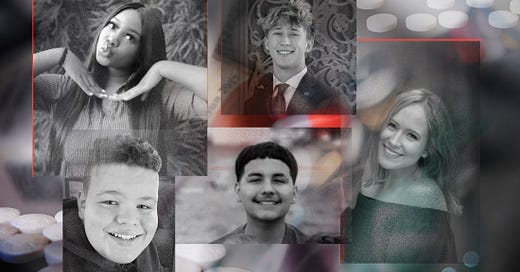Fentanyl Is Killing American Kids. Most Don’t Even Know They’re Taking It.

Clockwise from top left: Breanna Scott, Marco Troper, Tiffany Iler, Noah Rodriguez, and Luca Manuel. (Illustration by The Free Press using images courtesy of the families)
Every week, more than a dozen U.S. teenagers lose their lives to fentanyl. James Fishback reports on the unwitting victims—and the parents they’ve left behind.
719
Just over a week ago, Marco Troper, the 19-year-old son of former YouTube CEO Susan Wojcicki, died in his Berkeley dorm room after taking a drug.
“We don’t know what was in it,” his grandmother Esther Wojcicki told local media. “Teenagers and college students need to know that drugs today are not the same as the drugs of yesterday. They’re often laced w…
Enjoying the story?
Enter your email to read this article and receive our daily newsletter.
Error
Already have an account?
Sign In














